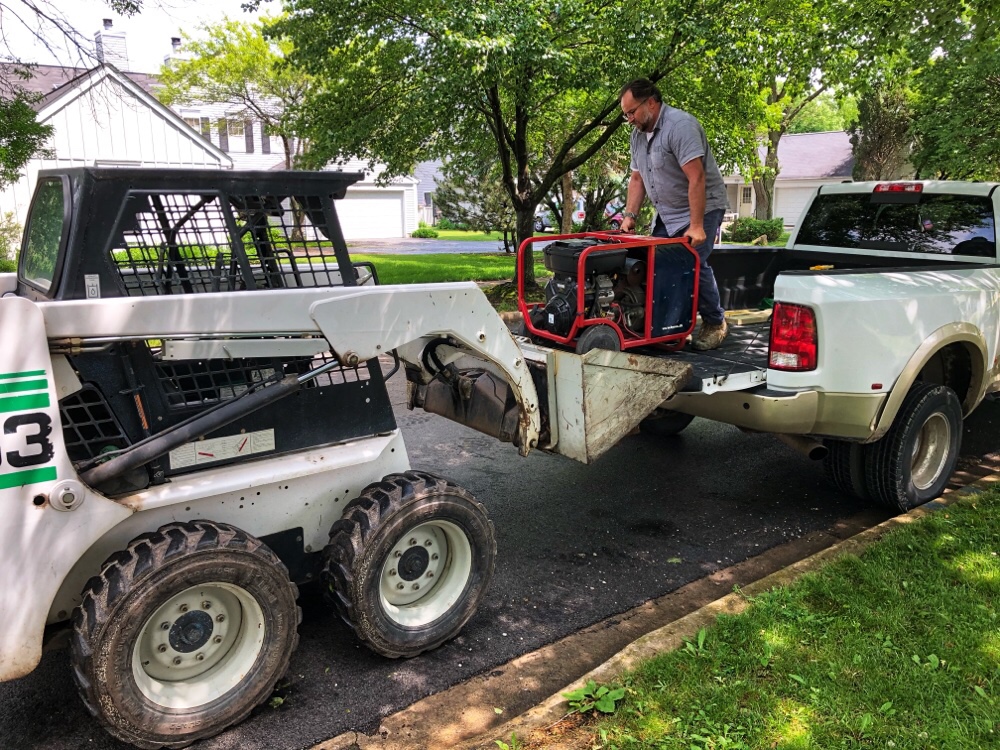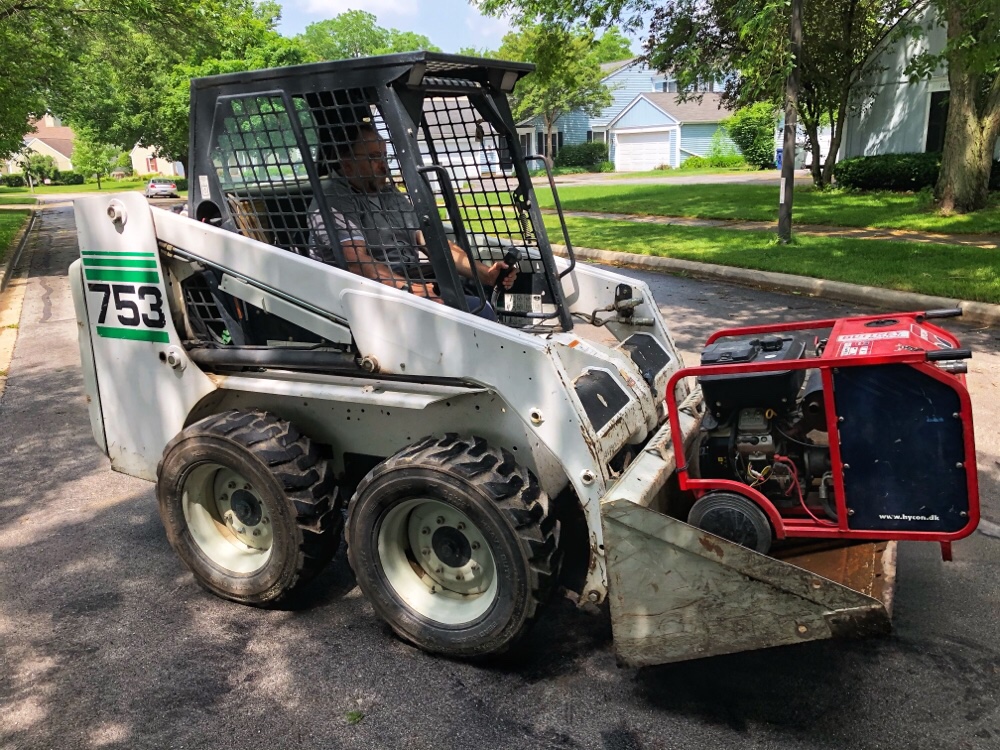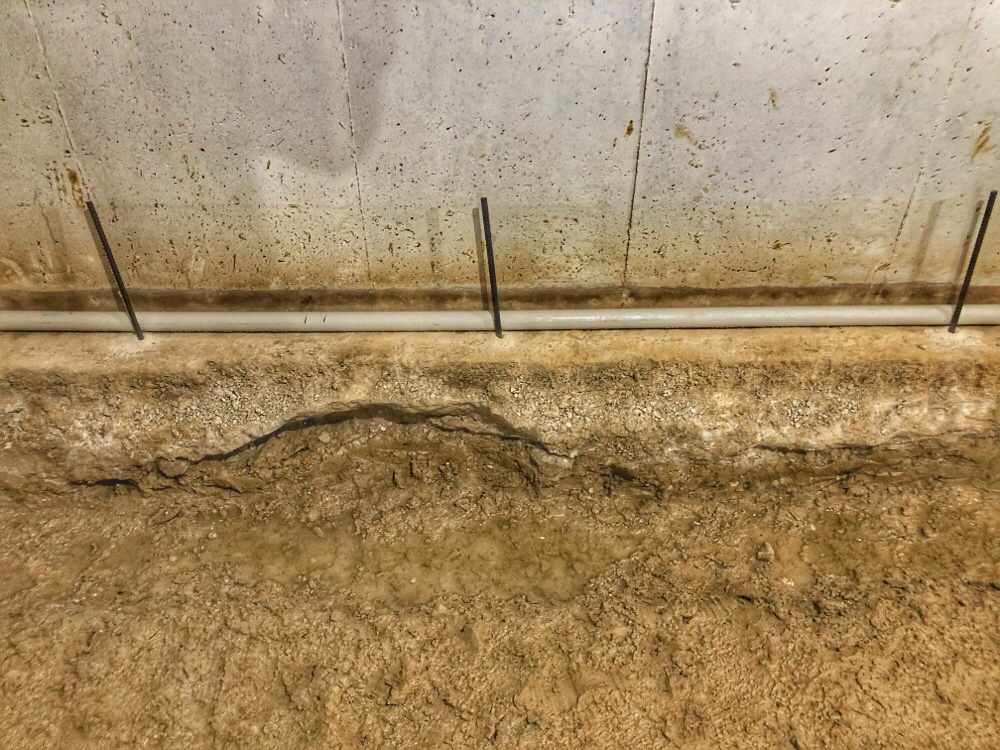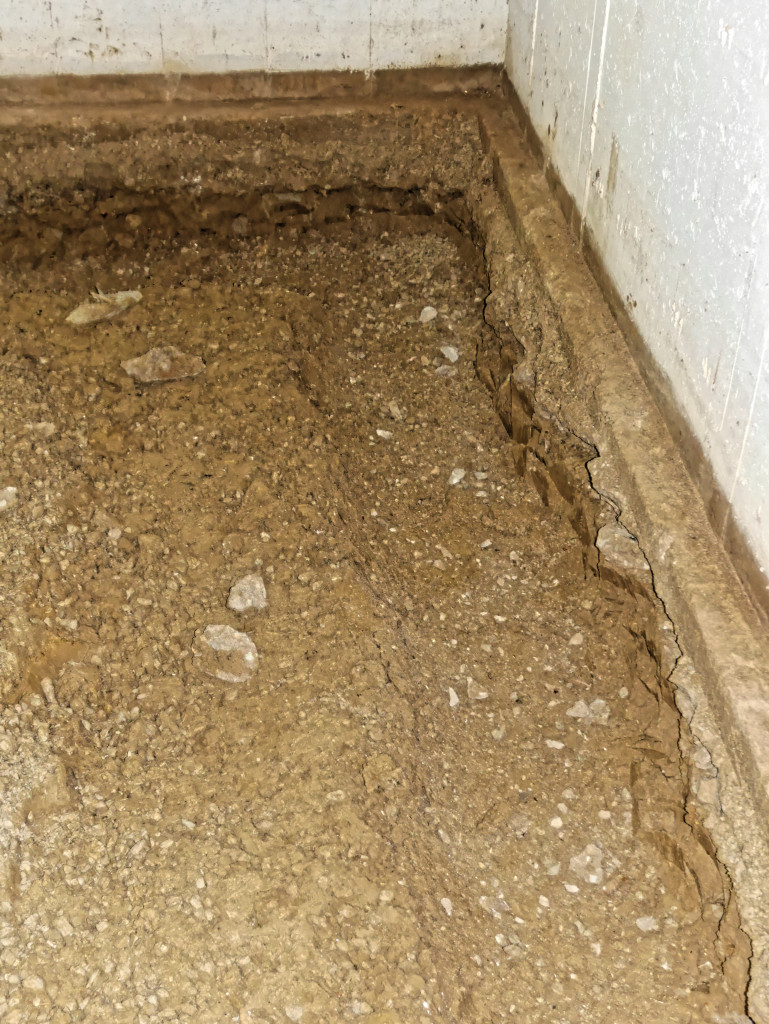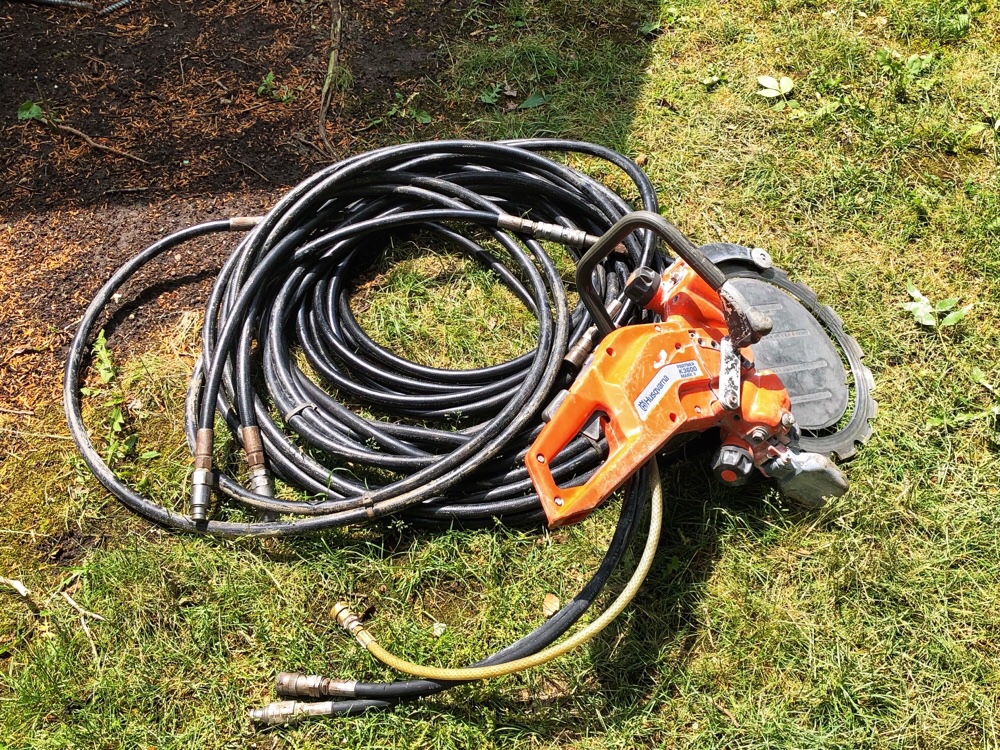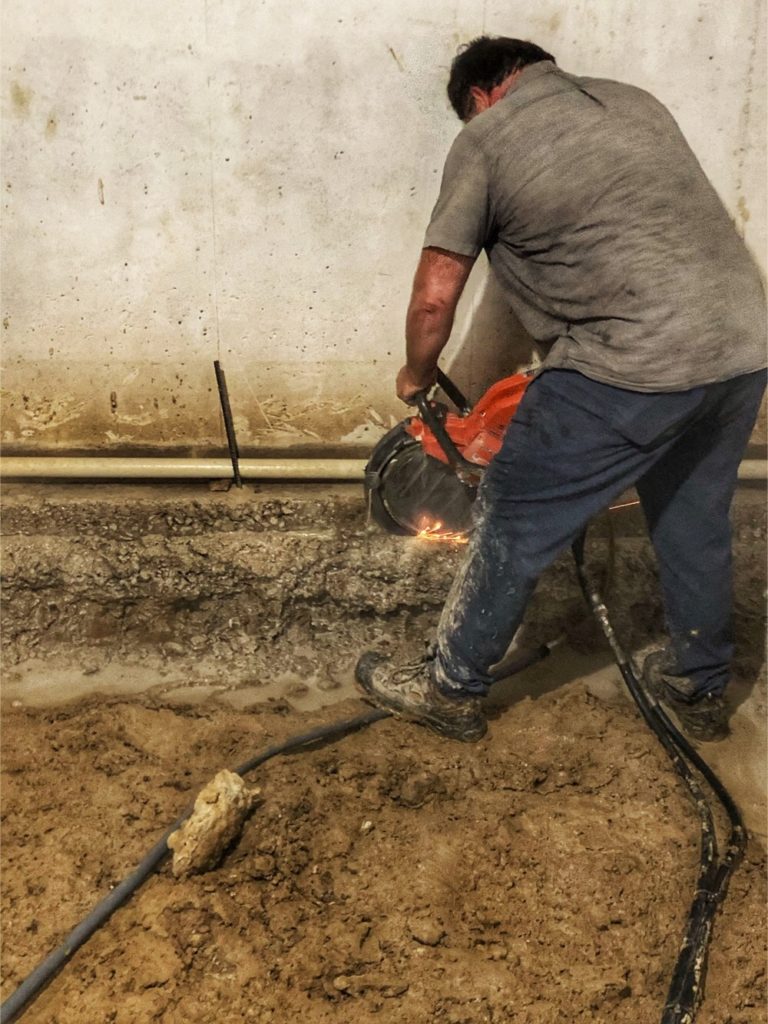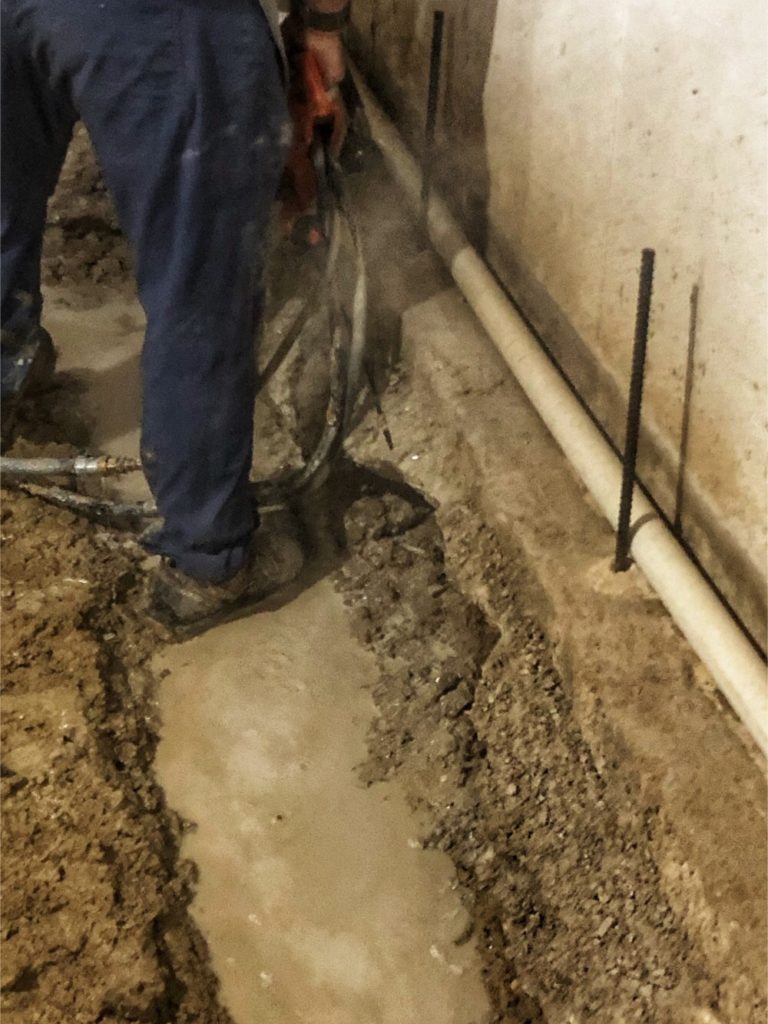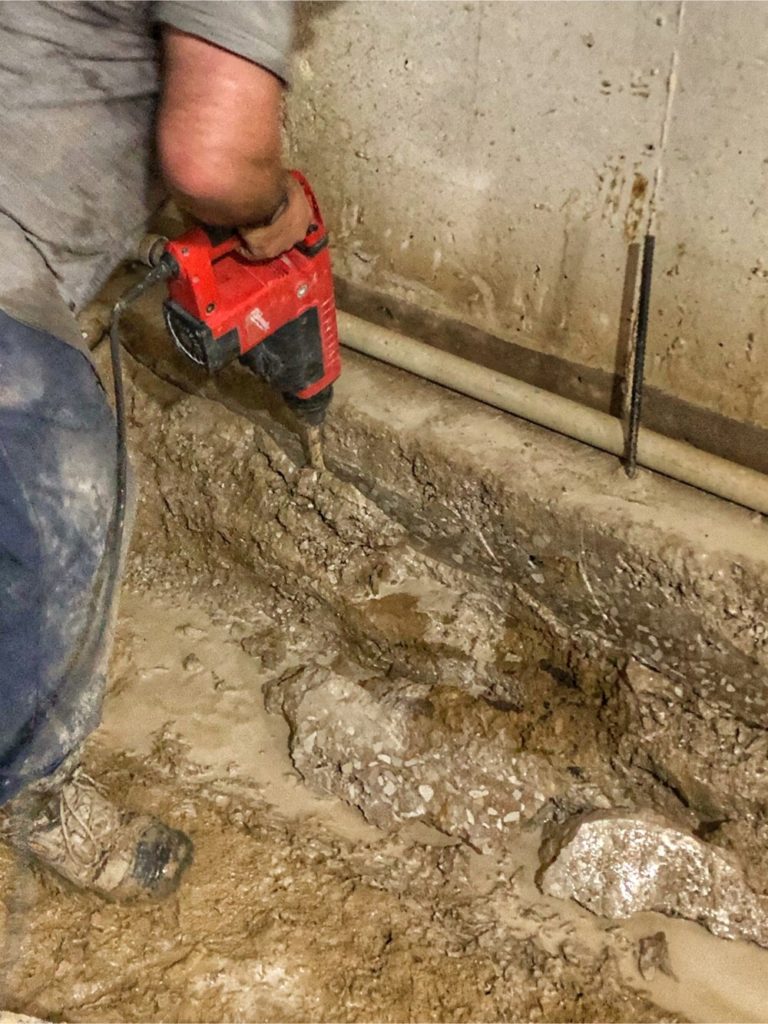As you may recall from my recent posts I’m lowering the floor in a basement. This process has presented problems and challenges.
A home’s foundation has a footing on the bottom that helps distribute the weight of the foundation. When I excavated below the foundation the footing was exposed. Naturally, my plan was to extend the foundation and to add a new footing. However, there was a problem. When the original foundation was poured overflow concrete seeped out forming excess clumps of concrete. This concrete would need to be removed if I hoped to correctly pour the new foundation extension.
I tried several methods to cut off the excess concrete, but none worked successfully. I had no choice but to rent an hydraulic Ring Saw. This tool has a large 18 HP gas powered external unit which is connected to a relatively light saw by hydraulic hoses. In addition, a third hose is connected to a water source as this is a wet saw. The water is used to reduce friction, and to keep the blade cool. I needed to use this complicated system as its engine component could be placed outside of the basement. Using a gas powered saw directly in a closed space is never a good idea.
The saw’s engine component is very heavy, but luckily I have my own Bobcat. The tool rental store loaded the saw on my truck, and I rolled it from the truck to the scoop on the Bobcat.
Using the saw was awkward, but I had an assistant to help me manage the hoses. However, the water from the sawing process added to the overall mud in the basement.
I was able to make a deep cut separating the excess concrete from the footing. I then used a handheld electric jackhammer in this cut to remove the excess concrete.
The process was messy, but I was able to remove the excess concrete allowing me to properly build concrete forms to extend the foundation to its new lower depth. I’ll show you that process in a future post.
